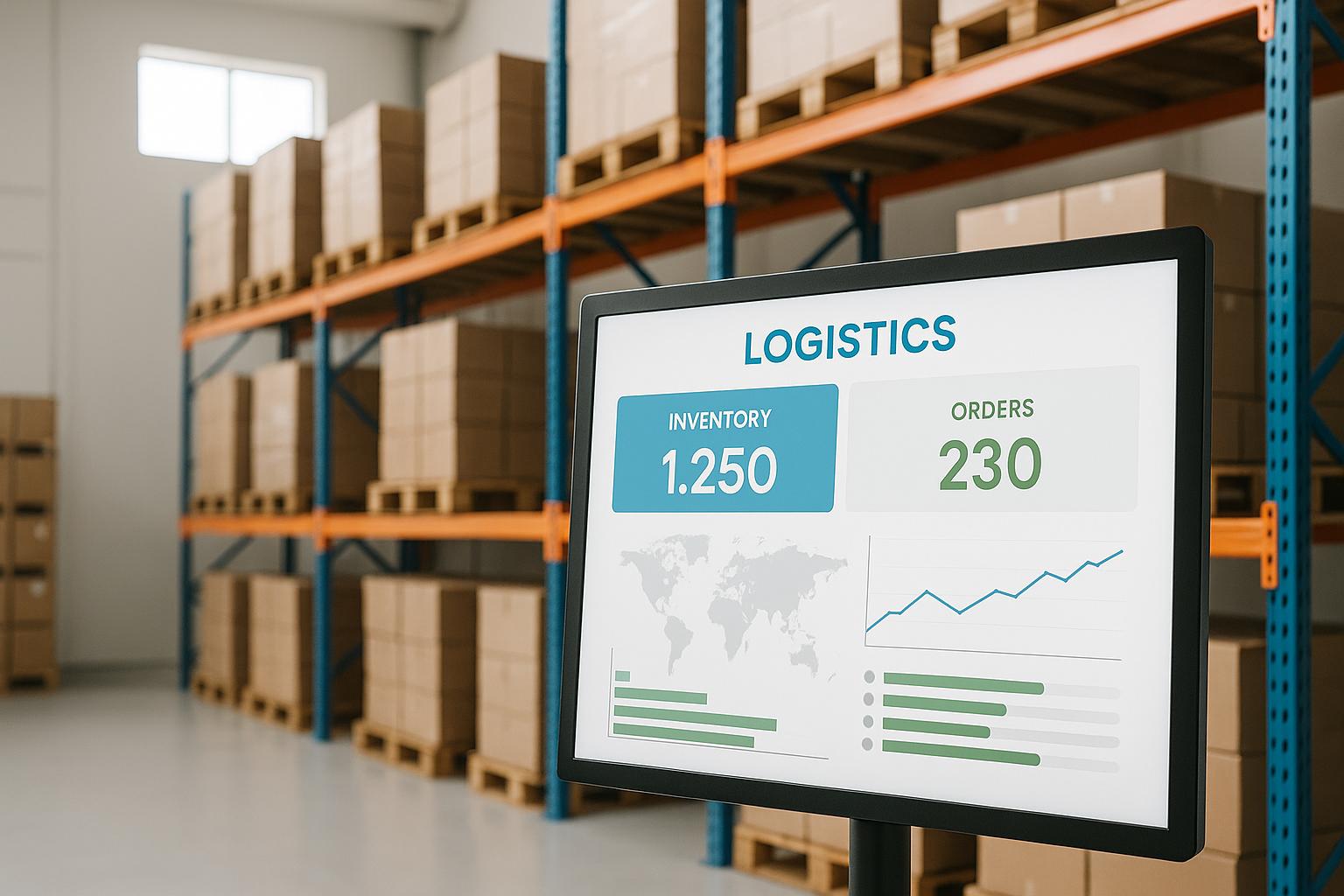Global billing systems are essential for businesses expanding internationally. Here's what you need to know:
- Handle payments across borders and currencies
- Comply with international regulations
- Automate invoicing and payment processing
- Integrate with existing business tools
Key features to look for:
- Multi-currency support
- Tax management
- Subscription handling
- Fraud prevention
- Data security (PCI DSS compliance)
Top systems include:
When choosing a system:
- Match features to your business needs
- Consider scalability
- Evaluate pricing structure
- Check integration capabilities
- Prioritize security and compliance
Remember: The right global billing system can streamline operations, improve cash flow, and support international growth.
Quick Comparison:
| System | Best For | Key Feature | Starting Price |
|---|---|---|---|
| Stripe Billing | All-around use | Wide feature range | 2.9% + 30¢/transaction |
| Chargebee | Complex billing | Strong revenue recognition | $250/month |
| Recurly | Subscription-based | User-friendly interface | Free core plan |
| Zuora | Large enterprises | High-volume transactions | Custom pricing |
Related video from YouTube
Global Billing Basics
Global billing systems are the backbone of international business. They're not just about invoices - they handle multiple currencies, follow various rules, and keep your money flowing across borders.
Main System Parts
A global billing system has three key parts:
1. Usage Metering
This part tracks how customers use your service. It's like a digital counter that records every time someone uses your product.
2. Invoice Generation
This part creates bills based on what customers use. It keeps track of all bills, past and present.
3. Payment Management
This part handles the money transfer. It works with different payment systems to get funds in various currencies.
These parts work together smoothly. When a customer starts using your service, the usage meter starts counting. This info goes to the invoice maker, which creates an accurate bill. Then, the payment system processes the money, switching currencies if needed.
Working with Multiple Currencies
Handling different currencies is a big deal in global billing. It's about making things easy for your customers.
Here's how it works:
- Your system needs to switch between currencies. It needs up-to-date exchange rates.
- Customers should see prices in their own currency before they buy. This builds trust.
- Many systems lock in the exchange rate when a customer buys. This protects against currency changes.
Doing this well can boost your business. Customers are more likely to buy when they can pay in their own currency.
Following Global Rules
Dealing with international money rules is tough. Here's what you need to know:
1. Anti-Money Laundering (AML)
You need to check who your customers are and watch for odd transactions.
2. Know Your Customer (KYC)
You need to verify customer identities. It's the law, and it helps stop fraud.
3. Payment Card Industry Data Security Standard (PCI DSS)
If you handle credit cards, you need to follow these rules to keep data safe.
4. ISO 20022
This is a new standard for banks. By 2025, your billing system should be ready for it.
Following these rules is complex but crucial. As Andrii Semitkin from SPD Tech says:
"Put compliance high on your list of priorities before you start developing your software."
To stay on top of these rules:
- Check for potential issues regularly.
- Use automated systems to help with compliance.
- Keep up with new rules through industry groups and networks.
Must-Have Features
When picking a global billing system, you need certain features. These can make or break how well you handle international transactions. Let's look at what you should have:
Subscription Tools
Subscription models are everywhere in today's digital world. Your billing system needs to handle these recurring payments like a pro.
Look for these subscription features:
- Automatic recurring billing
- Flexible pricing (tiered, usage-based, etc.)
- Trial period handling
- Easy plan changes
- Cancellation processing
Take Chargebee, for example. They offer tools to help businesses set up steady revenue streams, boost cash flow, and run smoother operations.
Payment Systems
Your global billing platform needs to play nice with different payment providers worldwide. Here's what to look for:
- Multiple payment gateways (like Stripe, PayPal)
- Various payment methods (cards, bank transfers, digital wallets)
- Multi-currency support
- Automatic currency conversion
FastSpring shows how it's done. They bundle global payments, different checkout options, and fraud prevention into one package. No need to juggle multiple systems.
Tax Management
Dealing with international taxes is tricky. Your billing system should help with:
- Automatic tax calculation based on location
- Support for different tax types (VAT, GST, sales tax)
- Tax exemption handling
- Compliance with global tax rules
FastSpring shines here too. Katie Stephan from FastSpring says they handle both payments and taxes in one service. This makes tax compliance much simpler for global businesses.
Setting Up Your System
Setting up a global billing system is a big deal for businesses going international. It's not just about flipping a switch - you need to plan it out carefully. Let's break down the key parts of getting your system ready to roll.
System Requirements
First things first: your tech needs to be up to snuff. Here's what you're looking at:
- A rock-solid IT setup that can handle tons of transactions without breaking a sweat
- A system that can grow as your business does
- Plenty of space to store all your data
- Tech that can keep up with all those pesky international rules
Katie Stephan from FastSpring puts it this way:
"A truly global billing system should handle not just payments, but also taxes in one seamless service. This integration is key for businesses looking to simplify their international operations."
Connecting Your Tools
Now, you've got to make your new billing system play nice with your other business tools. Here's how:
1. Figure out what needs to connect
Think about your CRM, accounting software, inventory tools, and customer support systems. They all need to talk to each other.
2. Pick how you'll connect everything
You've got options:
- APIs for custom connections
- Pre-made connectors for popular tools
- Third-party platforms if you're dealing with a lot of complex systems
3. Set up those payment gateways
This is how you'll actually get paid. For example:
- For Stripe, head to your dashboard's Integrations section and log in
- With PayPal, turn on Instant Payment Notification and add the URL your billing system gives you
4. Test, test, and test again
Before you go live:
- Run fake transactions through each gateway
- Make sure data's flowing correctly between all your tools
- Double-check that currency conversions and tax math are spot-on
Chris, who started Service Provider Pro, says:
"Payment gateway integration is crucial. It's not just about accepting payments; it's about providing convenience and security to your customers across different markets."
5. Get your team up to speed
Your staff needs to know how to use this new system:
- Give them thorough training on all the features
- Write up guides for common tasks and how to fix problems
sbb-itb-d1a6c90
Safety and Rules
Let's talk about keeping global billing systems safe and following the rules. It's all about secure payments and staying legal.
Data Security
Protecting customer and payment info is key. Global e-commerce is set to hit $8.1 trillion by 2026. That's a lot of data to keep safe.
Here's the scoop:
PCI DSS: Your Security Roadmap
The Payment Card Industry Data Security Standard (PCI DSS) isn't optional. It's a must for anyone handling card data. Here's what you need to do:
- Set up firewalls
- Encrypt cardholder data
- Keep anti-virus software up-to-date
- Limit access to cardholder data
Don't forget: PCI compliance is an ongoing process. You'll need to check in annually, and your requirements depend on how many transactions you handle.
Encryption and Tokenization: Your Secret Weapons
Point-to-point encryption (P2PE) and tokenization are like bodyguards for cardholder data. They also make PCI compliance audits easier.
Security Audits: Don't Wait for Trouble
Check your systems regularly. Don't let a breach be your wake-up call.
"PCI DSS compliance is tough, but worth it", says Satya Rane, COO of ControlCase.
Stopping Fraud
Fraud isn't just about money. It can hurt your brand too. Here's how to fight back:
Smart Fraud Detection
Use AI to watch your payment gateways. It can spot things humans might miss.
Team Training
Your employees can be fraud-fighters too. Teach them what to look for.
Transaction Limits
U.S. Bank suggests capping transaction sizes and requiring two people to approve big payments. It's like having a bouncer at the door.
Tackle Chargebacks Head-On
Chargebacks cost online businesses $125 billion a year. Ouch. Here's how to cut them down:
- Be clear about trials and billing
- Offer different pricing tiers
- Make it easy to cancel
- Have a clear refund policy
Keep Talking to Customers
Make it easy for customers to reach you. It can stop small issues from becoming big problems.
Making Your System Better
You've set up your global billing system. Great! But don't kick back just yet. To stay ahead, you need to keep improving. Here's how to keep your system sharp.
Checking System Health
Regular check-ups are a must. Here's how to keep tabs on your system:
Monitor Key Metrics
Keep an eye on:
- How fast you reconcile
- How accurate you are
- How many exceptions pop up
These numbers tell you if your system's running smoothly. If exceptions start spiking, you might need to tweak your process.
Stay on Top of Performance
Set up alerts for weird patterns. Catch problems early, fix them fast.
Alex Clem, a financial automation whiz, says:
"Keep checking those KPIs. They'll show you where to improve."
Audit Regularly
Dive deep every few months. You might spot hidden issues and make sure you're following all those tricky global rules.
Auto-Matching Payments
Automating payment matching is a big deal. Here's why it rocks and how to nail it:
Why Automate?
- Fewer human slip-ups
- Your finance team can focus on cooler stuff
- Your books are spot-on
Real Results
Chargebee's customers are seeing big wins:
- Doctify cut down on manual work
- Animalz fine-tuned their cash flow for peanuts
Jens Hellberg from TruckScience is pumped:
"This new matching feature? It's a time-saver! No more Stripe headaches."
Making It Happen
1. Pick Smart Tools
Find stuff that plays nice with what you've got. Chargebee's Chrome plugin, for example, works great with QuickBooks and Xero.
2. Set Clear Rules
Tell your system exactly how to match payments. Amount, date, reference number - make it crystal clear.
3. Keep Rules Fresh
Your business changes, so should your rules. Give them a once-over every few months.
4. Handle Odd Cases
Some payments will still need a human touch. Have a plan for these oddballs to keep things moving.
Choosing Your System
Picking the right global billing system can make or break your international business. Here's how to choose one that fits your needs perfectly.
Feature Comparison
When comparing billing systems, focus on features that match your business model. Here's a quick look at some top options:
| System | Key Features | Best For |
|---|---|---|
| Stripe Billing | Wide range, includes subscriptions and invoicing | All-around use |
| Chargebee | Strong recurring billing and revenue recognition | Complex billing |
| Recurly | Easy-to-use subscription billing and dunning | Recurring subs |
| Zuora | Enterprise-level for high-volume transactions | Large businesses |
Stripe Billing is flexible and can grow with your business. Chargebee excels at handling tricky billing scenarios.
Jens Hellberg from TruckScience loves Chargebee's auto-matching:
"This new matching feature? It's a time-saver! No more Stripe headaches."
If you're all about subscriptions, Recurly's user-friendly interface is hard to beat. For big enterprises with tons of transactions, Zuora's robust features might be just right.
Price Comparison
Cost often decides which billing system you'll pick. Here's how some popular options compare:
- Stripe Billing: 2.9% + 30¢ per successful card charge
- Chargebee: $250/month to start, free for first $250,000 in revenue
- Recurly: Free core plan, custom pricing for higher tiers
- Zuora: Custom pricing based on your needs
Stripe's pay-as-you-go might look good, but it can add up fast if you process a lot. Chargebee's $250/month start offers a good mix of features and cost for growing companies.
Don't just look at the price tag. Think about time and money saved through automation. Doctify and Animalz, both using Chargebee, cut down on manual work big time after switching.
The cheapest option isn't always best. Focus on value – how much time and hassle will it save you? A pricier system that automates complex stuff might save you money in the long run.
Also, think about growth. Your system should scale with your business without breaking the bank. Look for flexible pricing tiers or custom solutions for bigger needs.
Summary
Picking the right global billing system is a big deal for companies doing business worldwide. Here's what you need to know:
Picking Your System
Look for features that fit your business and where you want to go. Some options:
- Stripe Billing: Flexible
- Chargebee: Good for complex billing
- Recurly: Great for subscriptions
- Zuora: Suits big companies
Must-Have Features
Your system should:
- Handle multiple currencies
- Follow international rules
- Offer flexible pricing
- Give solid reports
- Automatically chase late payments
Money Matters
Don't just go for the cheapest. Think long-term. For example, Chargebee's $250/month might be better than Stripe's pay-as-you-go if you're growing fast.
Plays Well with Others
Make sure it works with your other tools and can grow with you. As Jens Hellberg from TruckScience said about Chargebee:
"This new matching feature? It's a time-saver! No more Stripe headaches."
Keeping Things Safe
Pick a system that follows PCI DSS rules and keeps data safe. Regular security checks are a must.
Making Life Easier
Look for systems that do the boring stuff for you, like matching payments and sending invoices. This frees up your team for more important work.
Payment Methods
Think about how your customers want to pay. SWIFT works globally but can be slow and pricey. SEPA is good for Europe, and ACH works in the U.S. Choose what makes sense for your markets.
Always Improving
Setting up your billing system isn't a one-and-done deal. Keep an eye on how it's working, update it when needed, and stay in the loop about new features. This way, your billing system keeps up with your business as it grows.
FAQs
Who is the best billing software?
Picking the "best" billing software isn't one-size-fits-all. It depends on what your business needs. Here are some top options for 2024:
Square Invoices: It's a solid all-rounder. Works well for many types of businesses.
FreshBooks: If you want something easy to use, this might be your pick. Their prices:
- Lite plan: $8.50/month
- Plus plan: $15/month
- Premium plan: $27.50/month
Zoho Invoice: Gives you good bang for your buck. Their pricing:
- Basic plan: $49/month
- Standard plan: $99/month
- Professional plan: $249/month
Xero: Good choice if your business is growing fast.
Intuit QuickBooks Online: Works well for brick-and-mortar shops.
When you're choosing, think about:
- How big is your business?
- What industry are you in?
- What specific billing features do you need?
For example:
- Running a small business and want something simple? FreshBooks might be your best bet.
- Got a growing online store? Xero could be what you need.


